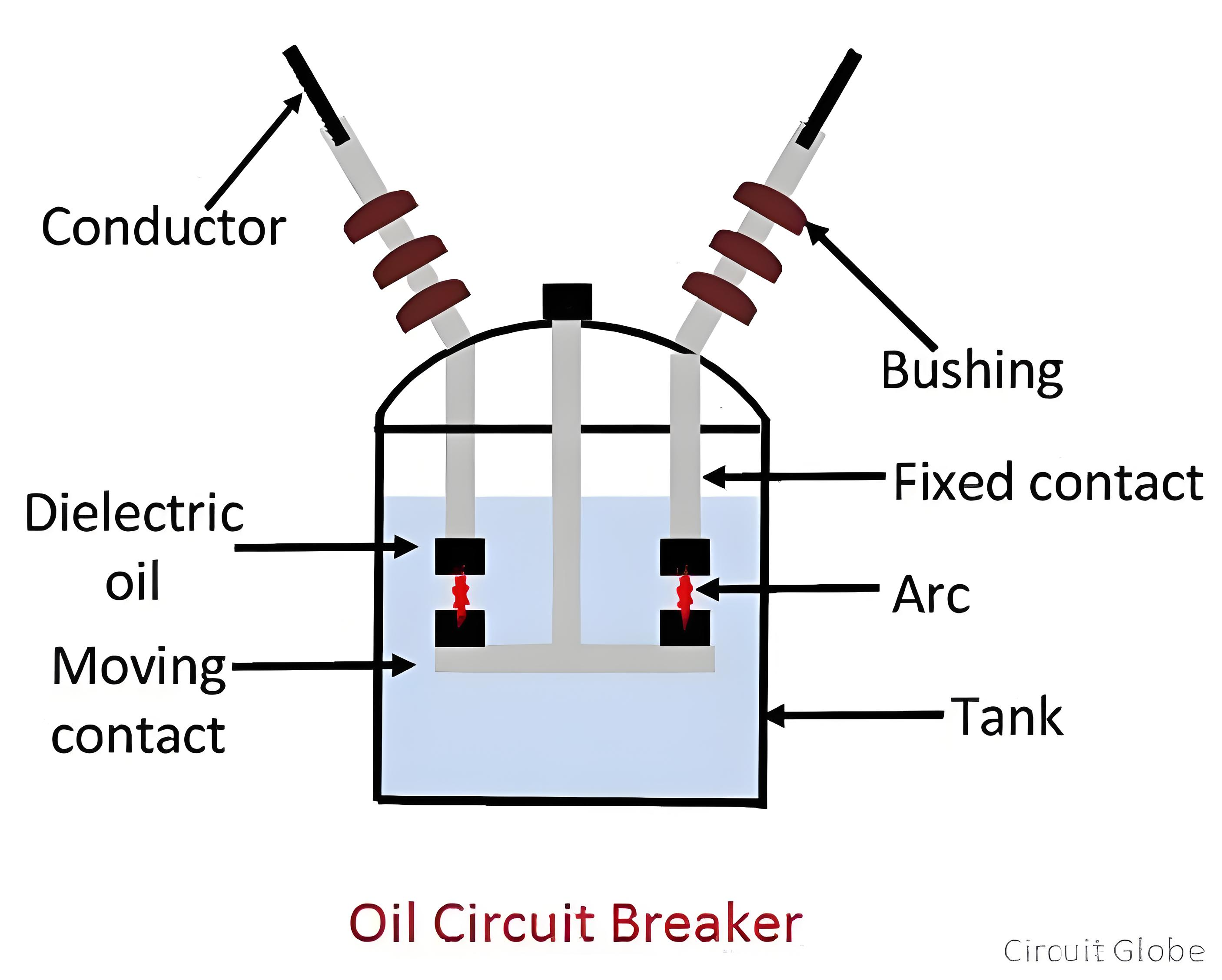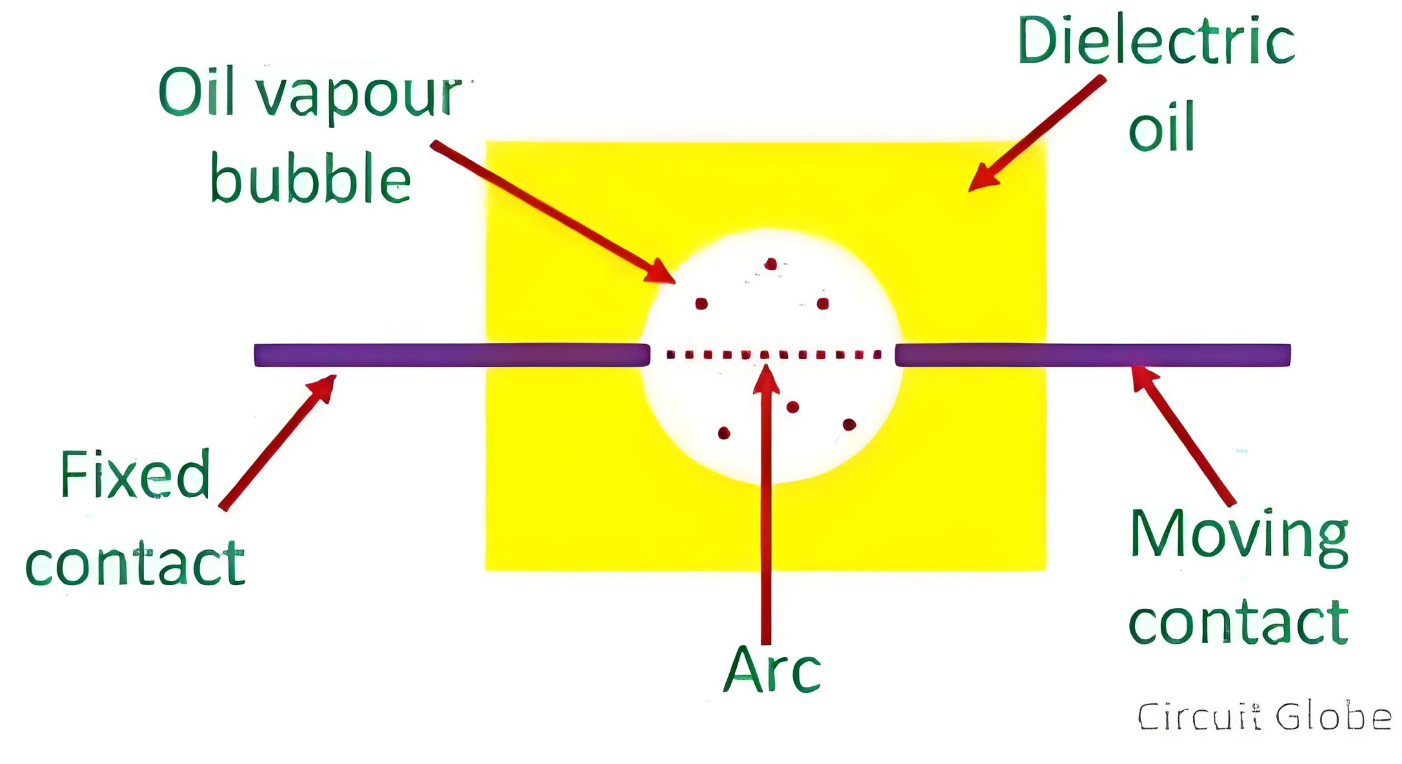An oil circuit breaker is a type of circuit breaker that utilizes oil as a dielectric or insulating medium for arc extinction. In an oil circuit breaker, the breaker's contacts are designed to separate within an insulating oil. When a fault occurs in the electrical system, the contacts of the circuit breaker open beneath the insulating oil, and an arc is generated between them. The heat of this arc causes the surrounding oil to vaporize. Oil circuit breakers are classified into two main categories:
The construction of an oil circuit breaker is relatively straightforward. It comprises current - carrying contacts enclosed within a robust, weather - tight, and earthed metal tank. This tank is filled with transformer oil, which serves a dual purpose: acting as an arc - extinguishing medium and providing insulation between the live components and the earth.
At the upper part of the oil - filled space in the tank, air is present. This air cushion serves to regulate the displacement of oil when gas forms around the arc. Additionally, it absorbs the mechanical shock resulting from the upward surge of oil. The breaker tank is firmly bolted to withstand the vibrations induced when interrupting extremely high currents. The oil circuit breaker is also equipped with a gas outlet, which is installed in the tank cover to expel the gases generated during operation.

Under normal operating conditions, the contacts of the oil circuit breaker remain closed, allowing the flow of current. When a fault occurs in the electrical system, the breaker's contacts start to separate, and an arc is immediately struck between them.
The arc generates a substantial amount of heat, leading to a rapid increase in temperature. This high temperature causes the surrounding oil to vaporize into gas. The liberated gas then engulfs the arc, and as it expands explosively, it forcefully displaces the oil. The arc is extinguished when the distance between the fixed and moving contacts reaches a specific critical value. This critical distance is determined by factors such as the magnitude of the arc current and the recovery voltage.

The oil circuit breaker offers highly reliable operation and is cost - effective. One of its most significant characteristics is that it does not require any special devices to control the arc generated by the moving contacts. When using oil as an arc - quenching medium, it has both certain advantages and disadvantages.
- Oil possesses high dielectric strength. It not only extinguishes the arc but also provides insulation between the contacts after the arc has been extinguished.
- In a circuit breaker, the oil allows for a relatively small clearance between the conductors and earth - grounded components, ensuring efficient operation.
- During the arc - extinguishing process, hydrogen gas is formed within the tank. Hydrogen has a high diffusion rate and excellent cooling properties, which contribute to effective arc quenching.
- The oil used in an oil circuit breaker is inflammable, posing a potential fire hazard.
- There is a risk of the oil forming an explosive mixture when it comes into contact with air, which can lead to dangerous situations.
- When the oil decomposes due to the arc, carbon particles are generated. These particles contaminate the oil, gradually reducing its dielectric strength over time.
When a circuit breaker interrupts a short - circuit current, its contacts may sometimes become burnt as a result of arcing. Additionally, the dielectric oil in the vicinity of the contacts becomes carbonized, causing a loss of its dielectric strength. This ultimately leads to a reduction in the breaker's breaking capacity. Therefore, regular maintenance of the oil circuit breaker is crucial. Maintenance tasks typically involve checking the condition of the oil and replacing it if necessary, as well as inspecting and replacing the contacts to ensure the optimal performance and safety of the breaker.